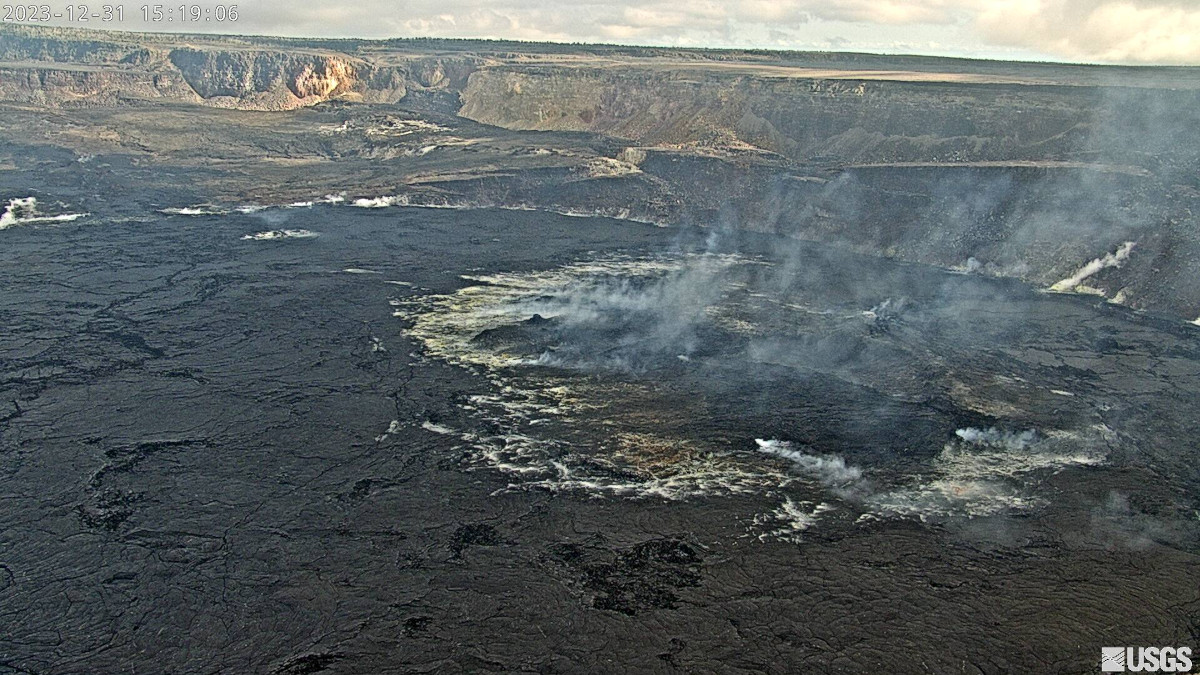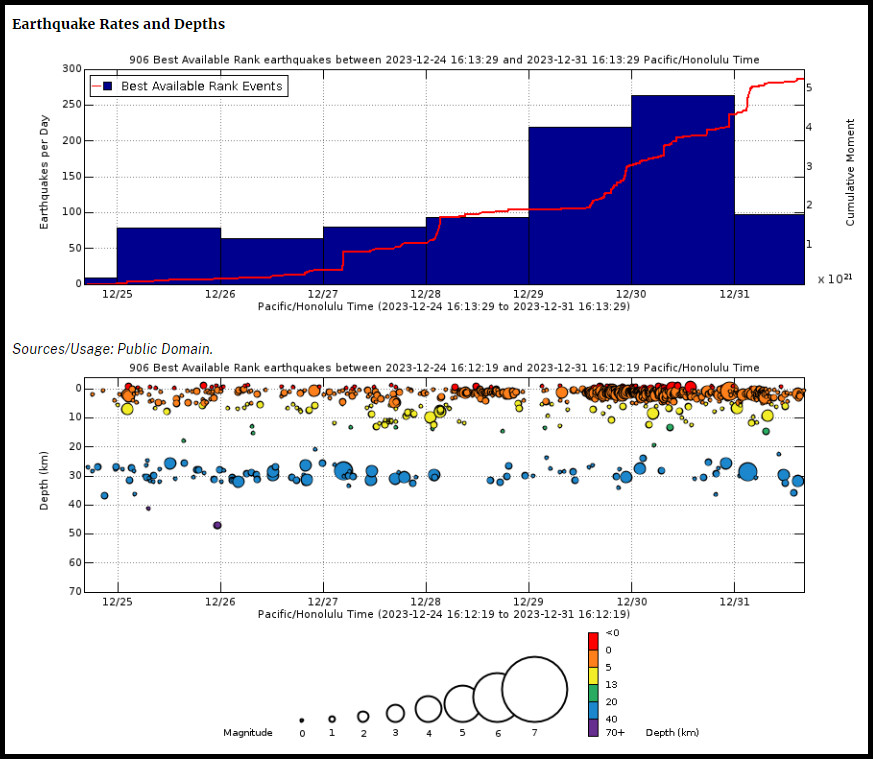(BIVN) – Kilauea is not erupting, and the volcano alert level remains at ADVISORY.
Moderate rates of seismicity have returned to the southern summit over the past day, after the earthquake swarm that began on December 29th south of Halemaʻumaʻu ended on Saturday.
At the same time the seismic swarm ended, scientists say a drop in inflation was also recorded at Sand Hill.
Seismic activity is also moderate in the upper East Rift Zone (44 events recorded), but remains low along the Southwest Rift Zone. No unusual activity has been noted along the middle and lower sections of Kīlauea’s East Rift Zone.
There have been no new closures reported by Hawaiʻi Volcanoes National Park due to the recent fluctuations in volcanic unrest.
From the USGS HVO update on Sunday, December 31:
Summit Observations: Seismicity in the southern part of Kīlauea’s summit region increased abruptly beginning at 1:10 p.m. on December 29, shortly after an increase in tilt at Sand Hill. Locatable earthquakes averaged about 15 per hour during the height of this swarm with a peak of 27 per hour. By noon yesterday, the average number of earthquakes dropped significantly to less than 5 per hour in coincident with the end of steep inflation at Sand Hill. In the past 24 hours earthquakes south of the caldera have continued at a lower rate than the previous day, with roughly 70 earthquakes, less than M2.5 occurring at depths of 1–3 km (0.5–2 mi). The increased seismicity began just south of Halemaʻumaʻu and the area has progressively widened to the southwest towards the Koʻae fault zone. Earthquakes are continuing with slight variations in rate and size in this region. Periods of increased or decreased numbers of shallow earthquakes can be expected to continue during repressurization of the summit magma reservoir, which has been ongoing since the end of the September eruption. Seismicity has not reached the levels that immediately preceded recent summit eruptions at Kīlauea.
Yesterday around 11:00 a.m. HST, the rate of inflation at the Sand Hill tiltmeter, located just south of the caldera, decreased significantly and continues to record slight inflation. The summit tiltmeter at Uēkahuna has recorded deflationary tilt over the past day, possibly starting a new DI event. Kīlauea’s summit region remains at a high level of inflation; relative tilt is above the level reached prior to the most recent eruption in September 2023, and it is higher than at any time since the 2018 eruption.
Sulfur dioxide (SO2) gas emission rates remain low. Field measurements indicated an SO2 emission rate of approximately 80 tonnes per day on December 28, which was similar to measurements in October, November, and early December.
The strong swarm of earthquakes and rapid inflation that occurred south of the caldera on December 29 and 30 indicated that magma was being emplaced at relatively shallow levels. This particular event led to an intrusion, but it is possible that similar events might lead to an eruption in the future. There are currently no signs of an imminent eruption at Kīlauea, but the volcano’s summit region remains unsettled, with a high level of inflation and continued seismic activity. The onsets of previous summit eruptions have been marked by strong swarms of earthquakes caused by magma moving towards the surface 1–2 hours before the appearance of lava. This type of earthquake activity is not being detected at this time.



by Big Island Video News5:06 pm
on at
STORY SUMMARY
HAWAIʻI VOLCANOES NATIONAL PARK - The seismic swarm that was rumbling earlier this weekend south of Halemaʻumaʻu, ended on December 30th.